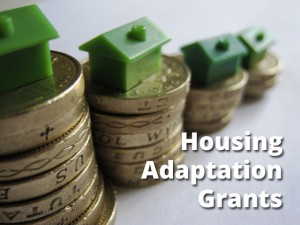22,676 United States Military veterans are living in this country today. That number continues to increase; some 200,000 active duty personnel make the transition into civilian life yearly, according to the Department of Veterans Affairs. For many, the time of transition is incredibly challenging, veterans are exposed to unemployment, homelessness and PTSD at far greater rates than their civilian counterparts. While many entitlement programs exist, the question becomes “is enough being done to assist veterans in attaining the highest quality life possible?” Seemingly, the answer is a resounding no. Part of the problem is that the gulf between services provided and a functional knowledge of these services is encompassing. We all face an incumbent responsibility to at minimum work in an effort to facilitate the awareness of these services to the parties that would benefit from them the most.
Often overlooked among the veteran population is the large segment of disabled veterans:
- 5.5 million former American military members live with some form of disability
- 3.4 million former American armed forces personnel suffered their disability while in service
- 2.9 million former American service members receive disability related compensation; equating to 36.2 billion dollars yearly
- 588,000 American veterans live with a disability rating of 70 percent or higher
Over the past 12 years, the number of veterans with a disability rating of greater than 70 percent has dramatically increased. The elevated number has been pointed to as an example of the advancement in medical technology and quality of military health care. It has been widely acknowledged that the influx of burns and amputations during the Afghanistan and Iraq wars would have cost the lives of wounded soldiers during the Vietnam War.
Perspective is important; disability is not a death sentence. Those with serious service-related injuries are capable of living full and meaningful lives. Nothing can replace what has been lost, but much can still be gained. Homeownership is an example of this. The VA loan program offers disabled veterans housing adaptation grants. These grants can be used to modify an existing home, a family member’s home (as long as it will be the primary residence of the applicant) or for the purchase of a new home, that will be tailored to the specific needs of the individual. The Specially Adapted Housing Grant (SAH) can be redeemed for a value of $67,555 and the Special Housing Adaptation Grant (SHA) allows for the usage for $13,511.
Numerous adaptations can be made with these grants, including:
- Added stair rails
- Widening external paths encompassed within property
- Added outdoor lighting
- Paving areas for wheelchair usage
- Adapting intercom and door locking systems
- Making window openings more accessible
- Adding Ramps
- Adapting Specialty toilets/baths
- Adding stair lifts
- Creating additional storage space
Specially Adapted Housing (SAH) Grant
| Eligibility | Living Situation | Ownership | Number of Grants You Can Use |
|
Long-term | A qualified individual is the possessor of the House | Maximum of three grants, up to the limited dollar amount acceptable |
Special Housing Adaptation (SHA) Grant
| Eligibility | Living Situation | Ownership | Number of Grants You Can Use |
|
Long-term | House is possessed by a qualified individual or family member | Maximum of three grants, up to the limited dollar amount acceptable |
Disabled veterans who are interested in purchasing a home further benefit from special disability options encapsulated within the VA home loan program. The VA loan calls for borrowers to pay a funding fee of 2.15 percent for first-time loan users and 3.30 percent for second-time users. These funding fees will go up to 2.30 percent for first-time users and 3.60 percent for second-time users on January 1, 2020. Disabled veterans qualify to have this fee waived, thus presenting them with a tidy savings benefit. Also starting on January 1, 2020, Active Duty Purple Heart recipients will have their funding fees waived. Furthermore, understand that your disability compensation can be used to assist the applicant with loan approval. The entitlement allotment can be counted as qualifying income. Many disabled veterans use their disability sum to pay for their loan principal.
The Following charts shows 2014 compensation rates for veterans with disabilities:
10% – 20% (No Dependents)
| Percentage | Rate |
| 10 Percent | $130.94 |
| 20 Percent | $258.83 |
30% – 60% Without Children
| Dependent Status | 30% | 40% | 50% | 60% |
| Veteran Only | $400.93 | $577.54 | $822.15 | $1,041.39 |
| Veteran with Partner Solely | $448.74* $447.93** |
$641.28* $640.54** |
$901.83* $901.15** |
$1,137.01* $1136.39** |
| Veteran with Partner & Single Parent | $487.11* $485.93** |
$692.44* $690.54** |
$965.78* $964.15** |
$1,213.74* $1212.39** |
| Veteran with Partner and Both Parents | $525.48* $523.93** |
$743.60* $740.54** |
$1,029.73* $1027.15** |
$1,290.47* $1288.39** |
| Veteran with Single Parent | $439.30* $438.93** |
$628.70* $627.54** |
$886.10* $885.15** |
$1,118.12* $1117.39** |
| Veteran with Both Parents | $477.67* $476.93** |
$679.86* $677.54** |
$950.05* $948.15** |
$1,194.85* $1193.39** |
| Additional for A/A spouse | $43.85* $43.00** |
$58.47* $58.00** |
$73.08* $73.00** |
$87.69* $87.00** |
70% – 100% Without Children
| Dependent Status | 70% | 80% | 90% | 100% |
| Veteran Only | $1,312.40 | $1,525.55 | $1,714.34 | $2,858.24 |
| Veteran with Partner Solely | $1,423.95* $1423.40** |
$1,653.04* $1652.55** |
$1,857.76* $1857.34** |
$3,017.60 |
| Veteran with Partner and Single Parent | $1,513.47* $1511.40** |
$1,755.35* $1753.55** |
$1,972.86* $1971.34** |
$3,145.49 |
| Veteran with Partner and Both Parents | $1,602.99* $1599.40** |
$1,857.66* $1854.55** |
$2,087.96* $2085.34** |
$3,273.38 |
| Veteran with Single Parent | $1,401.92* $1400.40** |
$1,627.86* $1626.55** |
$1,829.44* $1828.34** |
$2,986.13 |
| Veteran with Both Parents | $1,491.44* $1488.40** |
$1,730.17* $1727.55** |
$1,944.54* $1942.34** |
$3,114.02 |
| Additional for A/A spouse | $102.31* $102.00** |
$116.93* $116.00** |
$131.55* $131.00** |
$146.16 |
30% – 60% With Children
| Dependent Status | 30% | 40% | 50% | 60% |
| Veteran with Partner and Offspring | $483.75* $482.93** |
$687.97* $687.54** |
$960.19* $960.15** |
$1,207.04* $1206.39** |
| Veteran with Offspring Only | $432.90* $431.93** |
$620.17* $619.54** |
$875.54* $875.15** |
$1,105.34* $1104.39** |
| Veteran with Partner, Single Parental and Offspring | $522.12* $520.93** |
$739.13* $737.54** |
$1,024.14* $1023.15** |
$1,283.77* $1282.39** |
| Veteran with Partner, Both Parents and Offspring | $560.94* $558.93** |
$790.29* $787.54** |
$1,088.09* $1086.15** |
$1,360.50* $1358.39** |
| Veteran with Single Parental and Offspring | $471.27* $469.93** |
$671.33* $669.54** |
$939.39* $938.15** |
$1,182.07* $1180.39** |
| Veteran with Both Parents and Offspring | $509.64* $507.93** |
$722.49* $719.54** |
$1003.34* $1001.15** |
$1,258.80* $1256.39** |
| Add for Each Additional Offspring Below Age 18 | $23.75* $23.00** |
$31.67* $31.00** |
$39.59* $39.00** |
$47.50* $47.00** |
| Each Additional School Age Child above Age 18 | $76.73* $76.00** |
$102.31* $102.00** |
$127.89* $127.00** |
$153.47* $153.00** |
| Additional for A/A Partner | $43.85* $43.00** |
$58.47* $58.00** |
$73.08* $73.00** |
$87.69* $87.00** |
70% – 100% With Children
| Dependent Status | 70% | 80% | 90% | 100% |
| Veteran with Partner and Offspring | $1,505.66* $1505.40** |
$1,746.41* $1745.55** |
$1,962.81* $1962.34** |
$3,134.32 |
| Veteran with Offspring Only | $1,387.01* $1386.40** |
$1,610.81* $1609.55** |
$1,810.26* $1809.34** |
$2,964.82 |
| Veteran with Partner, Single Parental and Offspring | $1,595.18* $1593.40** |
$1,848.72* $1846.55** |
$2,077.91* $2076.34** |
$3,262.21 |
| Veteran with Partner, Both Parents and Offspring | $1,684.70* $1681.40** |
$1,951.03* $1947.55** |
$2,193.01* $2190.34** |
$3,390.10 |
| Veteran with Single Parental and Offspring | $1,476.53* $1474.40** |
$1,713.12* $1710.55** |
$1,925.36* $1923.34** |
$3,092.71 |
| Veteran with Both Parents and Offspring | $1,566.05* $1562.40** |
$1,815.43* $1811.55** |
$2,040.46* $2037.34** |
$3,220.60 |
| Add for Each Additional Offspring Below Age 18 | $55.42* $55.00** |
$63.34* $63.00** |
$71.25* $71.00** |
$79.17 |
| Each Additional School-age Child Above Age 18 | $179.05* $178.00** |
$204.62* $204.00** |
$230.20* $229.00** |
$255.78 |
| Additional for A/A Partner | $102.31* $102.00** |
$116.93* $116.00** |
$131.55* $131.00** |
$146.16 |
For more information about housing adaptation contact, VA Home Loan Centers today!

